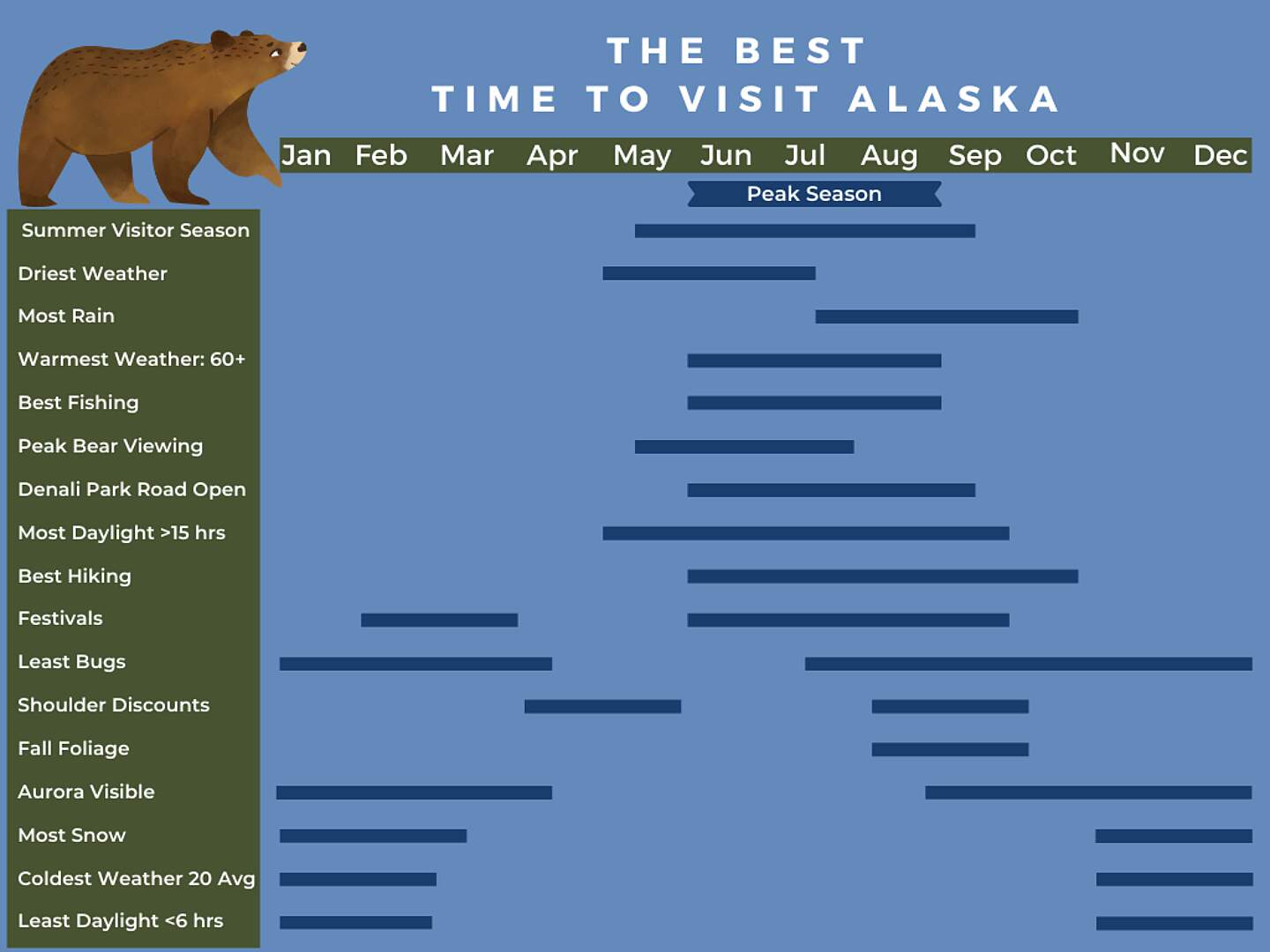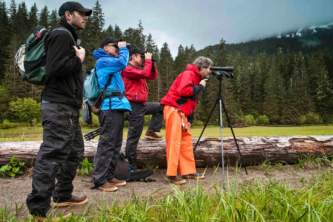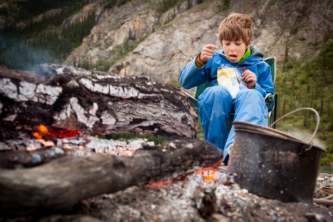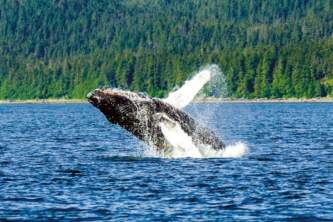Photo Credit: Bob Kaufman
The best time to visit Alaska is during the summer between May 10 and September 15. You'll experience temperatures in the 60’s to low 70’s, 16–24 hrs of daylight, leaves and flowers in bloom, rushing rivers, and the best wildlife viewing.
May to September is a big window. So when do we tell our friends to visit? June 15 to July 15. It’s the absolute height of summer: warm, dry, and alive with energy.
In researching your trip, you may see other dates mentioned:
- Peak season is June to August. By mid-June, it’s as warm as it’s going to get. All summer activities are available, including bus tours on the The Denali Park Road which begin around May 15.
- Cruise Season is also May through September. Small ship cruises start as early as mid-April.
- Shoulder Season is May (early season) and September (late season), with 10-25% discounts on some hotels, tours, and cruises.
- Aurora Season. The northern lights are visible from late August to early April. If seeing the northern lights is your main reason for visiting Alaska, you'll want to come at the tail-end of summer (August / September). Or, plan a winter vacation! The best time for a winter aurora vacation is February and March. It’s still plenty dark at night, but the days are longer and snow conditions are best for dog sledding, snowmobiling, skiing and other winter activities. The best area to view is near Fairbanks.

See why "Peak Season" is so popular. It's when the best of Alaska lines up!
Other Key Things to Know about Visiting Alaska in the Summer
- Temperature: Daytime highs range 60°F - 80°F. Nighttime lows are refreshingly cool, dipping into the 40's - 50's. In May and September, expect temperatures to be 5°- 10° cooler. May is our driest month with a 25% chance of rain on any given day. It gets rainier as summer progresses, to a 50% chance in September.
- Daylight: June 21 is the longest day of the year: 19 hrs of daylight in Anchorage, 18 in Southeast, and 22 in Fairbanks. It's light outside almost all night long from late May to late July—and light past 10pm for another month on either side of that. Long days mean you can pack in a lot of activities under the Midnight Sun!
- Wildlife Viewing: May – September is the best time to see wildlife in general. Fly-in bear viewing begins in May but is best in July. You can see Moose year-round. Gray whales migrate up in March/April; humpbacks are here from May to September; orcas are here year-round.
- Fishing is great all summer long.
- Hiking: Near Anchorage, trails at lower elevations are clear of snow by May, and in the mountains by early June. Conditions are good until mid-October. Closer to the Arctic, wait until the end of June.
- Mosquitos: Bugs don’t come out until early June and die off by early August.
- Summer & The Northern Lights: The Aurora is not visible for most of summer because it doesn’t get dark enough at night. If you want a trip that includes summer activities and the northern lights, visit between August 15 and September 15.
- Fall foliage peaks mid-august to mid-September. It’s most striking above tree line in the tundra. See our article for the best drives to see fall colors in Alaska.
What's Alaska Like the Rest of the Year?
- Alaska in September: It's the shoulder season with some discounts on hotels and excursions, fewer crowds, no bugs, fall colors, and northern lights viewing by mid-September. The days are shorter, and it can also be rainy and cooler. But not always. Sometimes, we have beautiful Indian Summer. That's why locals say, "September is a gamble." Read more.
- Alaska in October: The first half offers one last glimpse of summer—relatively warm temperatures (50's) and longer days. Then the days get colder and shorter with a chance of snow in the mountains. If you're coming to Alaska for summer experiences, don't visit in October. If you're looking for a unique Alaska visit, with no crowds, it might be for you. Read more.
- Alaska in November: November can be a challenging month. It's a time of increasing darkness (in Anchorage 8.5 hrs to 6). It's cold (20's and 30's), but there's often not enough snow for winter sports until the end of the month. If you're coming for the northern lights and don't mind limited winter excursions, then November is a good time. Read more.
- Alaska in December: The days are short. Dawn blooms at mid-morning (about 9 a.m. in Anchorage, later as you go north), with sunset fading by mid-afternoon (about 3:30 p.m. in Anchorage). But, there's usually great snow for winter sports, and the cities are decorated with twinkling lights for the holiday season. Cold, dark nights are ideal for aurora viewing. Read more.
- Alaska in January & February: January starts out pretty dark, but the days grow longer with 8 hours of light in early January to more than 12 hours by the end of February. It's a great time for a winter visit. Many towns have fun winter "cabin fever reliever" festivals. There's great snow for winter sports, and enough darkness for aurora. Read more.
- Alaska in March: March is our pick for the ideal month to visit Alaska in winter. The days are longer (12 - 15 hrs), it warms up (20's and 30's), and there's great snow. The Iditarod sled dog race starts the first Saturday in March. Read more.
- Alaska in April: April might be the hardest month to visit Alaska. Most of the snow has melted, but it's also too early for most summer activities. Still, there are few highlights. Adventure seekers can head to higher elevations for crust skiing. Day cruises depart from Seward to see the spring Gray whale migrations. Northern Lights viewing is good until the 20th. Read more.






